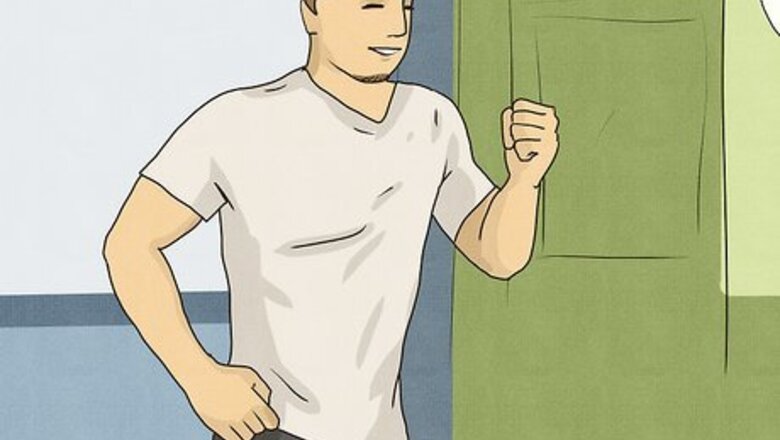
views
Creating an At-Home Fitness Routine
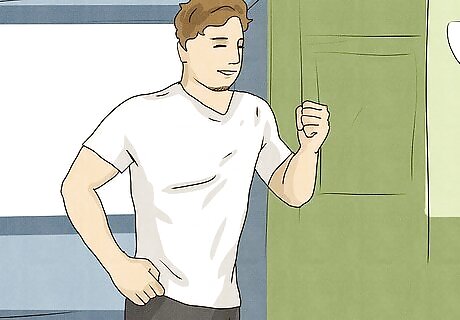
Spend 5 to 10 minutes warming up before every workout. Do a progressive aerobic activity that uses the same muscles you want to work out. For instance, slowly jog if you'll be going for a longer run. Not sure what to do? Try jumping jacks, leg or arm circles, or even dancing. Just get your blood pumping. Then, spend a few minutes stretching so you reduce the risk of injury during your workout. Stretches can be as simple as you like. Try bending over and touching your toes, rotating your torso with your hands on your hips, or doing walking lunges.

Aim for 30 minutes of cardio or aerobic activity 5 to 7 days a week. Aerobic activity is what gets your blood pumping and increases your heart rate which is why it improves cardiovascular fitness. 10 to 30 minutes a session is a good start for beginners, but you could bump it up to a total of 300 minutes a week to really get fit. It's totally fine to break up your workout time into smaller sessions. For instance, if you can't do 30 minutes of cardio in a single session, aim for 3 10-minute sessions.
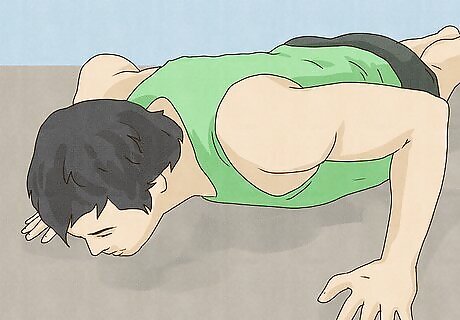
Do strength training 2 times a week to build muscle. Strength training, also called resistance training, makes you stronger and builds endurance. Try to do exercises that work a lot of muscles and add weights to increase your resistance. This helps you do a harder workout every time you exercises. To start, do basic strength training exercises like squats or push-ups. EXPERT TIP Laila Ajani Laila Ajani Fitness Trainer Laila Ajani is a Fitness Trainer and founder of Push Personal Fitness, a personal training organization based in the San Francisco Bay Area. With over 10 years as a trainer and exercise specialist, Laila has expertise in competitive athletics (gymnastics, powerlifting, and tennis), personal training, distance running, and Olympic lifting. Laila is certified by the National Strength & Conditioning Association (NSCA), USA Powerlifting (USAPL), and she is a Corrective Exercise Specialist (CES). Laila Ajani Laila Ajani Fitness Trainer As a beginner, you want to improve your strength and endurance. Begin with exercises such as lunges, bench presses, and ab workouts like crunches or planks. Adjust your workout to your fitness level to avoid injury and achieve your fitness goals safely and effectively.
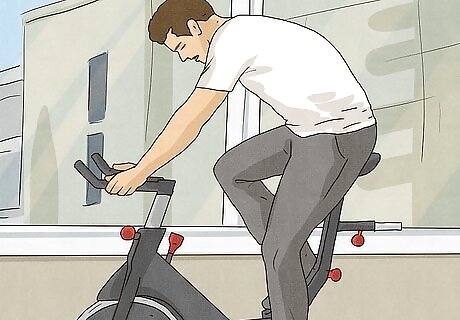
Spend 5 to 10 minutes cooling down after each workout. You might be tempted to just stop your workout when you've finished your last set or activity, but take a few minutes to do low-intensity exercises that lower your heart rate. You might drop your run into a walk or slow down your cycling, for instance. The cooldown prevents your muscles from cramping and can prevent dizziness while you get your breathing and heart rate back down. Gentle cool-down stretches can also improve your range of motion.
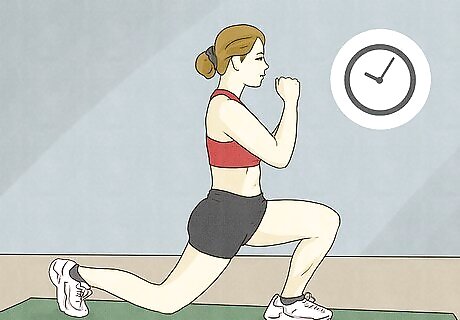
Schedule your workouts. It's totally normal to have great intentions of getting fit, but you might find that the day passes you by or you forget! Prioritize your fitness and make time in your daily routine for a workout so you really stick with it. Making a schedule can help you plan which exercises to do each day. For example, you might do cardio on Monday, Wednesday, and Friday, while on Tuesdays and Thursdays you do strength training.

Set achievable goals that you can break into smaller tasks. It's one thing to say you want to get fit, but that means something different for everyone. Figure out what you plan to achieve and make that your goal. It should be specific, realistic, and meaningful. Then, break down each goal into small, actionable steps so it feels like you're making progress regularly. For example, your goal might be to lift 50 pounds, lose 5 pounds, or run in a 5k. If you want to swim 10 laps and you can currently do 4, make it a smaller goal to swim an extra 2 laps within 1 week. Then, add an extra 2 laps by the following week, etc. If your goal is to lose 10 pounds, smaller steps might include working out 5 days a week, swimming 2 days a week, and avoiding fast food.

Write down or track your physical activity. Journaling or logging your fitness journey can help you hold yourself accountable and motivate you once your logged exercises start adding up. You can write down your progress in a notebook or type it into an app. Highlight your successes! Make a special note if you felt more energized or you lost a few pounds, for instance.
Trying Specific Exercise Options
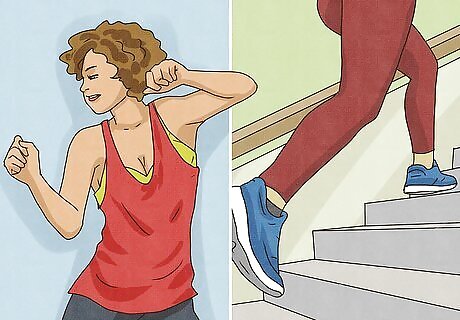
Try a mix of impact and no-impact cardio. Get your heart pumping to enjoy an effective cardio or aerobic workout. Impact just means that there's some force involved in the exercise. Kickboxing, walking, and running are good examples. For non-impact cardio, try swimming or cycling. These are a little easier on your joints. Here are a few more aerobic exercises to include in your workouts: Walking quickly or up and down the stairs Jogging Jumping rope Jumping jacks Dancing to high-energy music EXPERT TIP Laila Ajani Laila Ajani Fitness Trainer Laila Ajani is a Fitness Trainer and founder of Push Personal Fitness, a personal training organization based in the San Francisco Bay Area. With over 10 years as a trainer and exercise specialist, Laila has expertise in competitive athletics (gymnastics, powerlifting, and tennis), personal training, distance running, and Olympic lifting. Laila is certified by the National Strength & Conditioning Association (NSCA), USA Powerlifting (USAPL), and she is a Corrective Exercise Specialist (CES). Laila Ajani Laila Ajani Fitness Trainer Cardio can be fun. Find stimulating ways to make your treadmill workouts more engaging. Create a playlist of your favorite workout songs, watch a show or fitness class while you're on the machine, or try a dance routine from YouTube. To mix things up, switch between cardio machines like the treadmill, bike, rowing machine, and elliptical. Remember, you don't have to stick to traditional cardio exercises. You can also try fun activities like salsa dancing or playing a sport you enjoyed as a child.
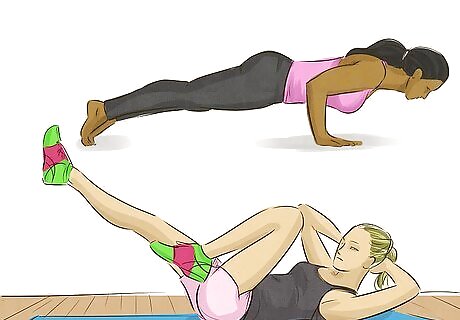
Do planks, sit-ups, and other bodyweight exercises. Want to build muscle mass without buying equipment? While planks and sit-ups work your core and abdominal muscles, exercises like squats can improve your lower-body strength. If you want to strengthen your upper-body muscles, try push-ups, crunches, or curls. Although you can do a lot of strength training without equipment, holding dumbbells while doing exercises like squats or lunges can increase resistance and help you get more out of your workout.
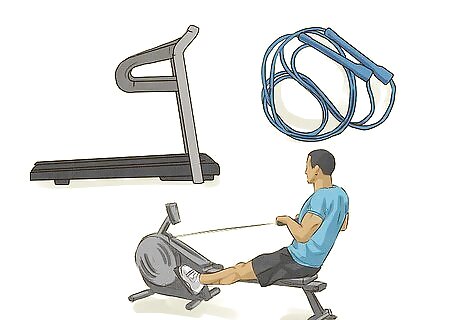
Invest in cardio equipment you can use at home. Sure, some cardio equipment takes up space, but you'll get a lot of use out of it! Get a stationary bike, rowing machine, or treadmill if you're committed to cardio at home. If you're short on space but want a good workout, pick up a jump rope and mini-trampoline. You might see mini-trampolines called rebounders and they're great if you don't have much room in your home for cardio equipment.
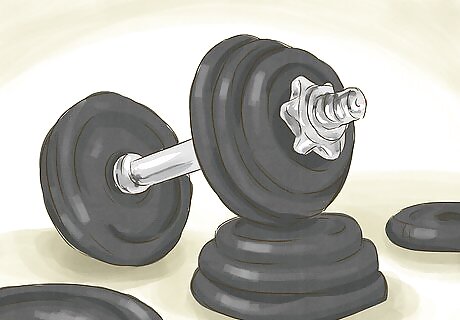
Invest in free weights or kettlebells to increase resistance. You can easily pick up some free weights like dumbbells or kettlebells at thrift stores or online. Get some in a variety of weights so you can challenge yourself as you work out. Resistance bands are another great tool to get more out of your workout. Don't want to buy equipment? Check your home for things you can lift. You might pick up heavy cans while strength training or use a sturdy scarf instead of an elastic resistance band.
Sneaking in Physical Exercise

Work out as you clean to squeeze in some fitness time. Life can get busy and it might feel hard to fit in a dedicated workout, but you can still be active every day! Think about all the physical things you do around your home and try to do a few of them at a brisk pace on the days that you can't necessarily work out. You might: Rake leaves or mow the lawn with a push mower Mop the floor Scrub the tub Vacuum
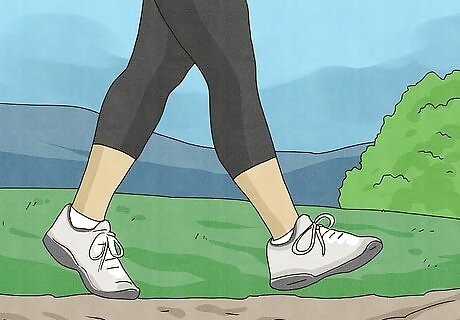
Take a brisk walk and hit the stairs. Try to walk around your neighborhood 2 or 3 days a week for as long as you can. Even just a 10-minute walk can really add up! Take the stairs whenever you see them, or if you live in an apartment building, climb up and down the stairs when you start or finish your walk. This is a fantastic strength-building aerobic exercise. To help you get up and around, figure out when you have the most energy during your day. Try to plan your walk during this window of time so you're more likely to follow through with it.
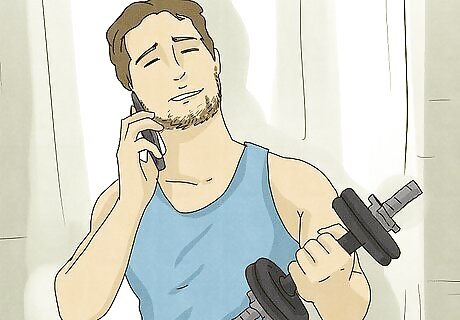
Squeeze bursts of physical activity into short breaks. Think about all the times that you're waiting throughout the day—on the phone stuck on hold, during a commercial break, or listening to commercials on the radio. Tell yourself to get active during these breaks. You'll be surprised at how much you can accomplish! For instance, do jumping jacks or sit-ups while you wait during commercials or hold a small dumbbell and pump your arms while you talk on the phone.
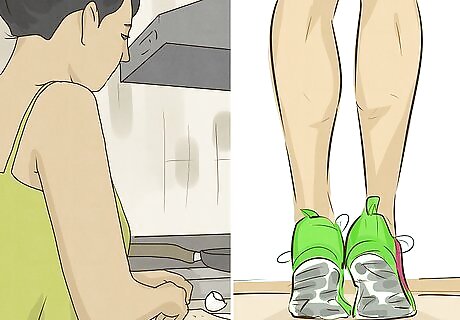
Do a stretch while you're completing a chore. Think about all the times you're doing something around your home where you're just standing in place. Maybe you're standing in front of the mirror brushing your teeth, standing in front of the stove while cooking, or standing while you fold clothes. Come up with stretches you can do while you work on those tasks so you're getting your chores done, but exercising at the same time. For instance, do a few squats while you brush your teeth or do calf raises while you're cooking.

Use an app to remind you to move. Have you ever gotten to the end of your day only to realize that you weren't very active? To prevent this, install an app that sends you reminders throughout the day to do physical activities. You can usually set up how often you'd like notifications. Some of these apps give exercise options, too which can make it more fun. For example, simple apps might go off every few hours to remind you to get up and walk for a few minutes while others might alert you and tell you to do basic stretches. You might program yours to go off every 2 hours, so you can get up and do 5 minutes of cardio stretches, for instance.

Make your errands more active. If you've got a day full of running errands, it's probably tempting to drive and grab the closest parking spots. Instead, think of ways you can treat errands like a workout—bike or walk if possible or take the bus and walk to different businesses. If you're driving, park further away from the store so you get more walking in. Skip the elevator or escalator and take the stairs instead.

Start a garden to get physical activity while you grow healthy food. Gardening might not be the first thing you think of when you consider getting fit, but there's a lot of effort involved! You can dig, lift, rake, plant, weed, and harvest which strengthen your bones and muscles. Don't have room for a garden at your home? Find out if your city has a community garden you can work in.
Following a Healthy Diet

Aim for 5 servings of fruits and vegetables every day. Fresh produce contains lots of vitamins and minerals so try to eat variety. If you find it hard to add fruits and vegetables, try gradually including them in your meals. For instance, eat 1 serving at breakfast, 2 servings at lunch, and 3 at dinner to get all of your recommended produce. Not sure what a serving is? Here are a few examples to get you started: 1 small apple 1 cup (190 g) of berries 1/2 cup (82 g) of dried fruit 2 cups (200 g) of leafy greens 1 cup (90 g) of raw or cooked vegetables like broccoli or carrots

Eat foods rich in whole grains. Half of the carbohydrates you eat should be whole grain so you get dietary fiber, iron, and B vitamins. Make simple swaps like eating whole-grain bread instead of white bread, brown rice instead of white rice, and oatmeal instead of breakfast cereal. These foods will keep you fuller for longer and can help keep your cholesterol low. You can usually find whole-grain versions of pancakes, tortillas, pasta, bread, and bagels.

Choose nutritious, lean sources of protein. You've got tons of healthy options! Reach for eggs, fish, beans, and meats like skinless chicken, pork roast, or lean ground beef. Don't forget that low-fat dairy like milk, cheese, and yogurt are also good sources of protein and calcium. Try to go for unprocessed sources of protein. Processed foods like deli meat, sausage, and bacon are high in sodium and saturated fat. Nuts, legumes, and beans are all fantastic sources of protein for vegan and vegetarian diets.

Cut back on the amount of sugary food you eat every day. Too much refined sugar can damage your heart, increase your risk for diabetes, and contribute to obesity. The American Heart Association recommends that women limit their sugar intake to less than 6 teaspoons (25 g) a day and men limit their intake to less than 9 teaspoons (38 g) a day. Keep in mind that refined sugars are often snuck into processed foods like crackers, bread, and condiments. Read food labels to see the added sugar content so you can track how much sugar you're consuming in a day.
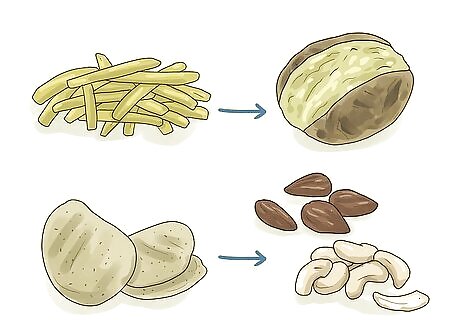
Limit your intake of saturated fat. Diets that are high in saturated fat can cause high cholesterol and heart disease. This means cutting back on cookies, pastries, fried food, and fast food. Try to make healthy swaps, like eating baked potatoes instead of french fries or a handful of nuts instead of potato chips. Avoiding these foods can also help you cut out excess sugar in your diet.


















Comments
0 comment